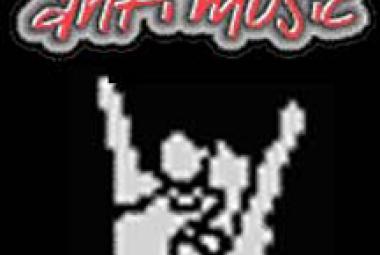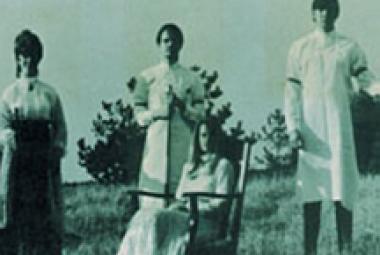I have written of Ritchie Valens already; he was the first Hispanic rock star and grew up in the San Fernando Valley community of Pacoima. Despite his Anglicized name (his birth name was Ricardo Esteban Valenzuela Reyes), Valens was proud of his heritage and was expressing an interest in making music at the age of 5. He taught himself to play guitar and, at 16, was hired by a local band called the Silhouettes (not the same as the doo-wop group the Silhouettes); he became the frontman when the lead singer moved on. The Silhouettes had a remarkable diversity among its membership, including African-American and Japanese-American members; he shared vocalist duties with two women. Under the name Richard Valenzuela, he was becoming known as the “Little Richard of San Fernando”.
Ritchie Valens was signed by producer Bob Keane to Del-Fi Records in 1958 after he saw one of the Silhouettes shows; it was Keane who suggested that he shorten his last name and add the “t” to his first. Bob Keane recalls of that night: “I’ll never forget the first time I saw Ritchie. He had a small, somewhat beat-up guitar amp worth about fifty bucks. He stood up there on stage, with complete command of his audience. He was this bull-like kid with an opera tenor’s torso. I knew he had a lot of potential. It should go without saying that what I heard impressed me, but I had no idea what to do with the raw talent I saw up there on the stage.”
Ritchie Valens released just two 45’s but still showed incredible versatility. His first, “Come On, Let’s Go” is now regarded as a straight-up rock and roll classic, but it failed to chart. Writing in 1998, Billy Vera recalls “first hearing [“Come On, Let’s Go”] on Alan Freed’s TV Dance Party, a local New York equivalent of Dick Clark’s American Bandstand. It was a record which really grabbed my teenaged ears. I had never heard anything quite like it. It had a much ‘thicker’ sound than anything by Elvis, Chuck Berry, Gene Vincent, or even Eddie Cochran. For thickness, the only thing that came close was Bo Diddley.”
His follow-up, “Donna” was completely different and became a bonafide hit, peaking at #2 on the charts at the end of 1958. “Donna” inspired a host of other songs addressed to female loves, most directly Dion’s “Donna the Prima Donna” (Dion and the Belmonts were also along on the Winter Dance Party), but also Neil Sedaka’s “Oh, Carol!” and “Denise” by Randy and the Rainbows (later covered by Blondie as “Denis”).
Legendary rock critic Lester Bangs has written of this song: “[Ritchie] Valens sang with an unassuming sincerity that made him more truly touching than any other artist from his era. ‘Donna’ is one of the classic teen love ballads, one of the few which reaches through layers of maudlin sentiment to give you the true and unmistakable sensation of what it must have been like to be a teenager in that strange decade. . . . The agonizing sense of frustration which is so crucial to adolescent life is never very far from his lyrics; and in his best songs, like ‘Donna’ and ‘Come On, Let’s Go’, it is right up front, just as it is in Eddie Cochran’s classic ‘Summertime Blues’.”
* * *
The flip side of “Donna” though is the song that has really endured over the years. Sung entirely in Spanish, “La Bamba” was just starting to become a hit as well in early 1959 and is a rocked-up version of a traditional Mexican wedding song dating from the 14th Century that is believed to have as many as 500 verses.
Writing for the Rolling Stone Record Guide, David McGee states: “To get an idea of his indelible contribution to rock & roll, consider the critic Lester Bangs’ citation of [Ritchie] Valens as the prototypical punk guitarist whose signature ‘La Bamba’ riff links Valens to a hard-edged, no-frills style of rock & roll later advanced by the Kingsmen, the Kinks, the Stooges, and the Ramones.” The thrilling Ramones call “Hey Ho, Let’s Go” – from the opening song “Blitzkrieg Bop” on their first album, Ramones – might have been lifted directly from Ritchie Valens’ “Come On, Let’s Go”.
“La Bamba” has been covered numerous times over the years; another Hispanic star, Trini Lopez had a 1966 hit with a more mellow version of the song, while Freddy Fender got on the charts with a Tex-Mex treatment. Folk artists like the Kingston Trio, Joan Baez and Harry Belafonte (among others) have also recorded the song. In one of their early sessions together, Mick Jagger and Keith Richards played “La Bamba” in 1961; ironically, they were both 17 years old, the same age as Ritchie Valens when he perished on the airplane crash. The tape of this rare recording brought $81,000.
The 1987 film La Bamba that helped revive interest in Ritchie Valens’ music starred Lou Diamond Phillips; the Chicano rock band Los Lobos (celebrating their 40th anniversary together this year) faithfully recreated Ritchie Valens’ music in the movie.
(June 2013/1)














